Flashcards
The pages falling out of Laura's old Golden guide proved to be a feature, not a bug.
(Listen to the radio version here.)
For Christmas 1974, my mother-in-law gave me my first pair of binoculars and my first Peterson field guide. I read it cover-to cover, and then read the Golden guide cover to cover.
The Peterson guide was great, but the main text was separate from the plates, many of the plates were still black and white, and there were no range maps. Also, the Peterson plates showed nothing but the birds, usually in profile, against a monochrome background, showing, for example, the three Eastern chickadees, Black-capped, Carolina, and “Brown-capped” (now Boreal) in exactly the same profile, with the exact same light blue background.
The Golden guide illustrations often gave hints about habitat and different ways the birds might look. The Golden guide showed the three Eastern chickadees and the four other North American chickadees in different poses, which primed me to recognize how chickadees of any species might cling to a narrow branch upside down or vertically. It showed them with a background of deciduous leaves for the Black-capped and Carolina Chickadees and conifers for the others, suggesting both habitat and the fact that chickadees aren’t likely to be seen on the ground.
Also, the Golden guide had all the illustrations on the right-hand page facing all the information and the range map for each bird. In every way it was more user-friendly, so it became the book I took with me everywhere starting the day I set out on my first birding adventure, March 2, 1975.
My technique at first was to rifle through every page of the book, starting with the loons, stick my finger in the page where I first found a bird resembling the one I was looking at, and then continue through to the end of the book just in case there were others that resembled it, too. I spent several long minutes puzzling over my very first bird, which proved to be a Black-capped Chickadee. My real-life bird, who flitted around me for many seconds, affirmed the different poses shown by the illustrated chickadees, but when I continued to the end of the book, I was momentarily stymied by the Blackpoll Warbler, who also has a black cap and white cheeks.
Fortunately, the warbler’s white throat and streaked back and sides quickly took it out of contention.
Had the chickadee been overhead rather than at eye level, I’d also have had to eliminate the Golden-winged Warbler, who also has white cheeks and a black bib.
But the golden yellow crown and wings shown on the Golden guide illustration instantly eliminated that one. Indeed, it was a few years later, when I was much more experienced, that I first saw a Golden-winged Warbler from exactly the angle at which it could, at least at first, be confused with a chickadee.
Throughout the spring and summer of 1975, I rifled through every page of my guide every time I saw a new or confusing bird, and as I grew more and more familiar with both birds and the field guide, I could much more quickly zip straight to my bird. Still, I double-checked not just every new bird, but birds I’d already seen that might be in a slightly different plumage or for any other reason confused me. My Golden guide was my constant companion all that year and the next, and then the pages started falling out. At first I tried to tape them in, but it was hopeless.
I don’t know anyone who experienced that with the Peterson guide, which was only available in hardback at the time, the pages very well stitched together. But dozens of birders told me that they’d experienced pages falling out of their Golden guides, too. I bought a second copy in 1977. In 1978, just before I met the author, Chandler Robbins, I found a hardbound edition in the university bookstore. I bought that one specifically to get it autographed, and still treasure it.
But I could hardly throw out my original copy—the one that had been with me for so many new birds! And 1977 happened to be the year I started teaching. That’s when I discovered that the falling-out pages were a feature, not a bug. Because the drawings were all on right-side pages, I could cut them out and glue them to index cards to create flashcards. Whenever we saw a bird on a class field trip or a student asked about a species, I’d make a flashcard to post on the bulletin board. That winter, I made flashcards of all the warblers for myself—I reviewed those before every spring migration until I had them down cold. I also did that for shorebirds. And before Russ and I made our first trip to Texas in 1978, I made flashcards of the birds I hoped to see there. I hardly ever use those old flashcards anymore, and in some cases the glue dried up and no longer holds the pictures to the cards, but I’ve kept them all these years.
I hardly ever study with flashcards before trips anymore, either, but this year I created a set before Russ’s and my Hawaiʻi trip. In the weeks before we left, we’d run through them once or twice a day, an invaluable exercise for familiarizing Russ with what were virtually all new birds for him, and a good way for me to brush up on them, too. Of course, my trusty old Golden guide didn’t show Hawaiian birds—to make these flashcards, I used illustrations from Cornell’s Birds of the World website, and this time around, rather than using glue, I laminated them.
The original Golden guide, published in 1966 by Golden Press, had a tan cover depicting the colorful Lazuli, Painted, and Indigo Buntings.
The expanded, revised edition with a blue cover showing the same buntings was published in 1983. It didn’t have a lot of changes except to update names and some range maps, and now is badly out of date.
In 2001, the Golden guide was updated a final time by St. Martin’s Press, again without substantial changes to the content but this time with a huge change to the cover, which now depicted photos of Bald Eagles.
I bought a copy when it first came out but gave it away a few years later, knowing I wasn’t going to use it now that the National Geographic field guides, frequently updated, featured all the excellent elements of the Golden guide (except the sonagrams) and the pages never seem to fall out.
I’ve had a lot of field guides over the years, but never used any as heavily and regularly as I did my treasured first Golden guide. My original copy, or the pieces of it, may be half a century old now, but that’s still younger than I am, and I still treasure it.



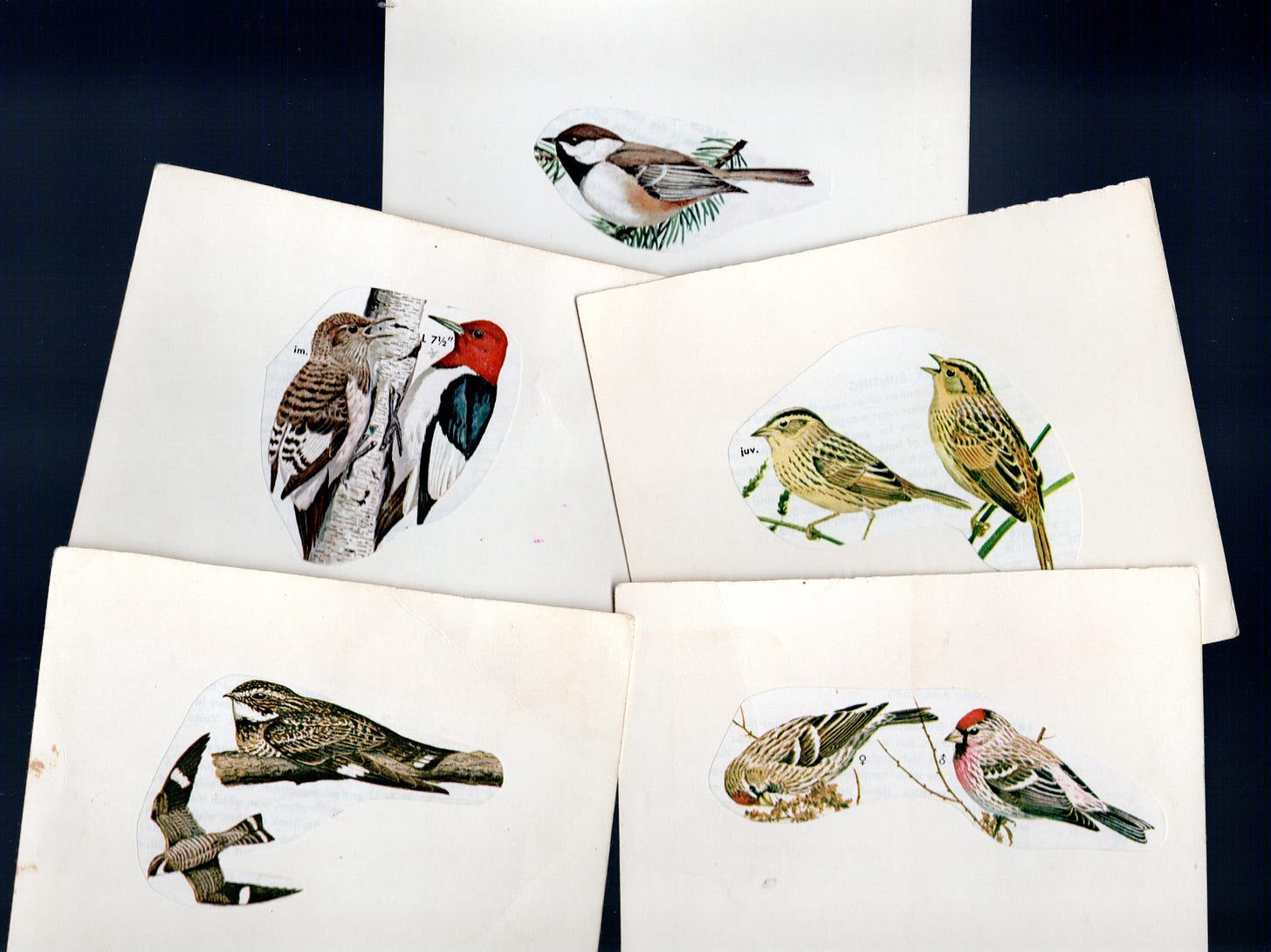
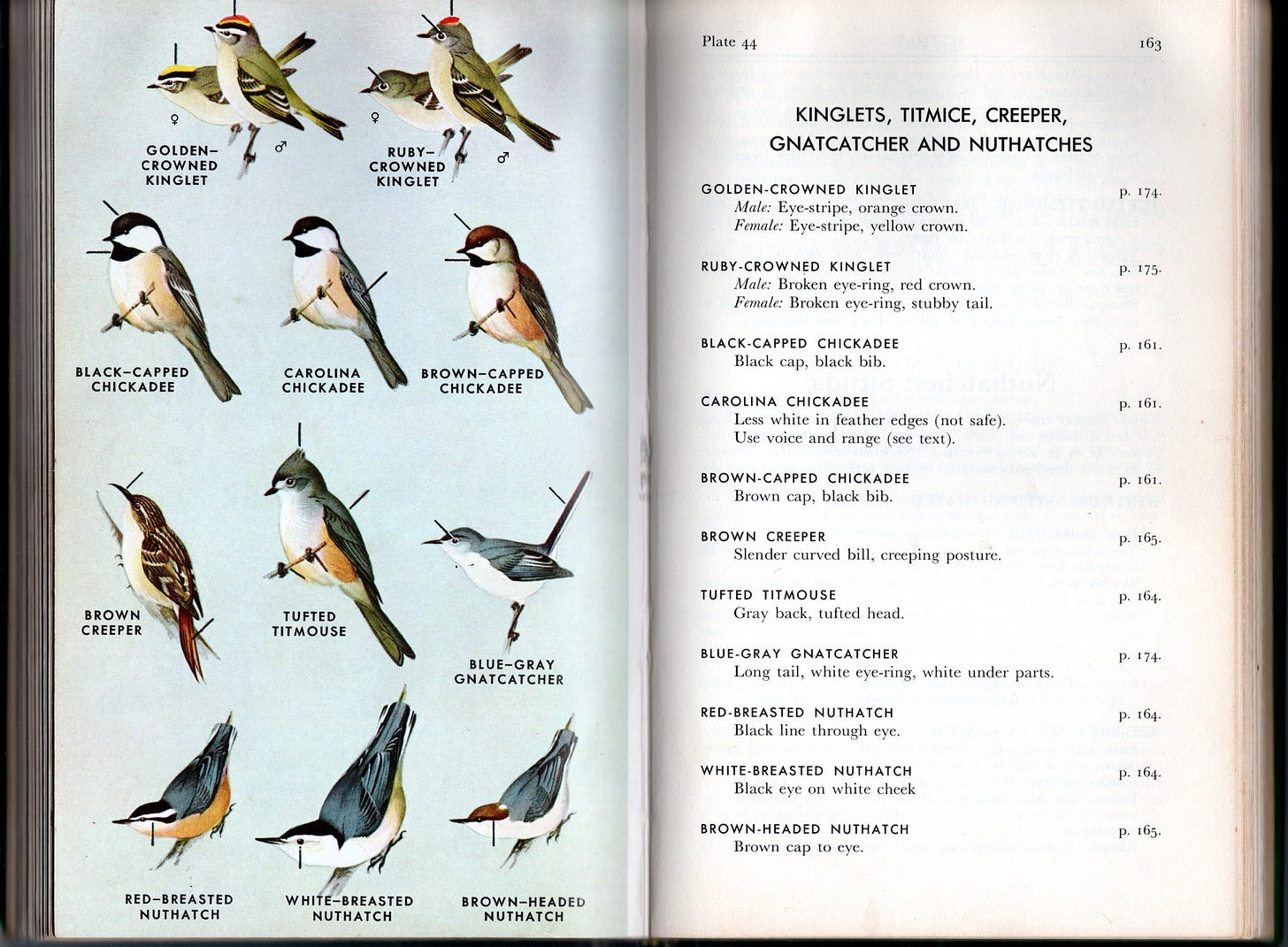
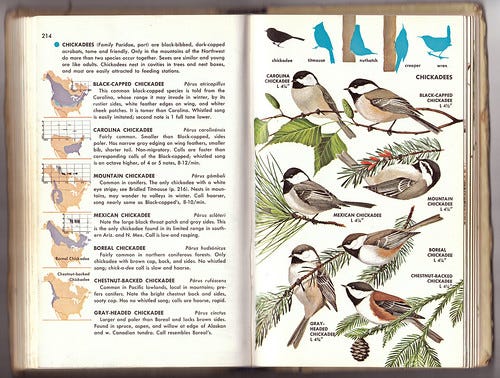
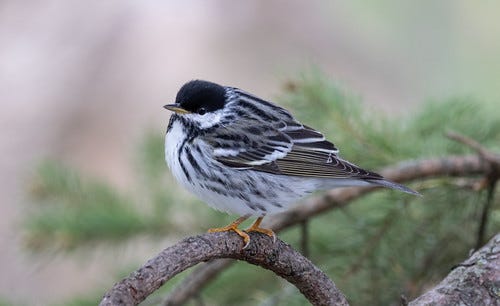
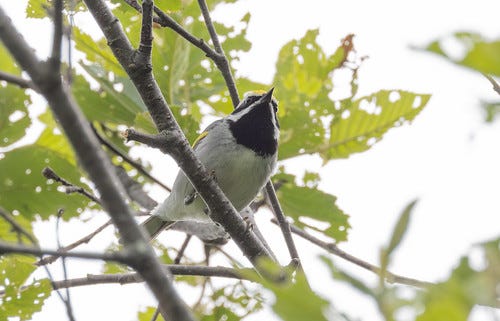
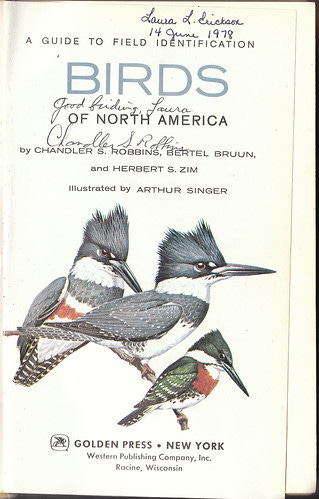

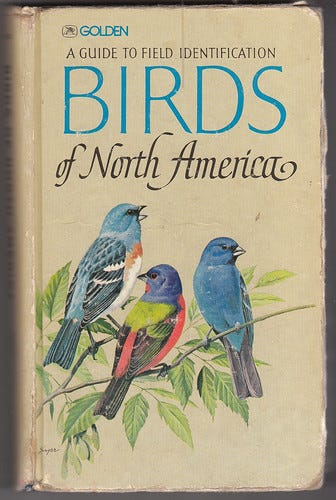
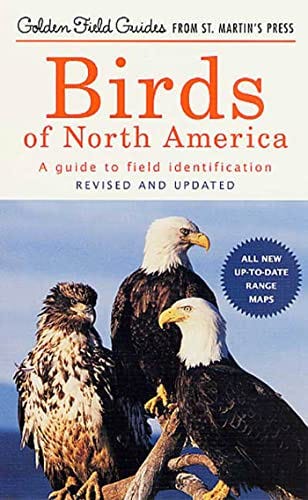
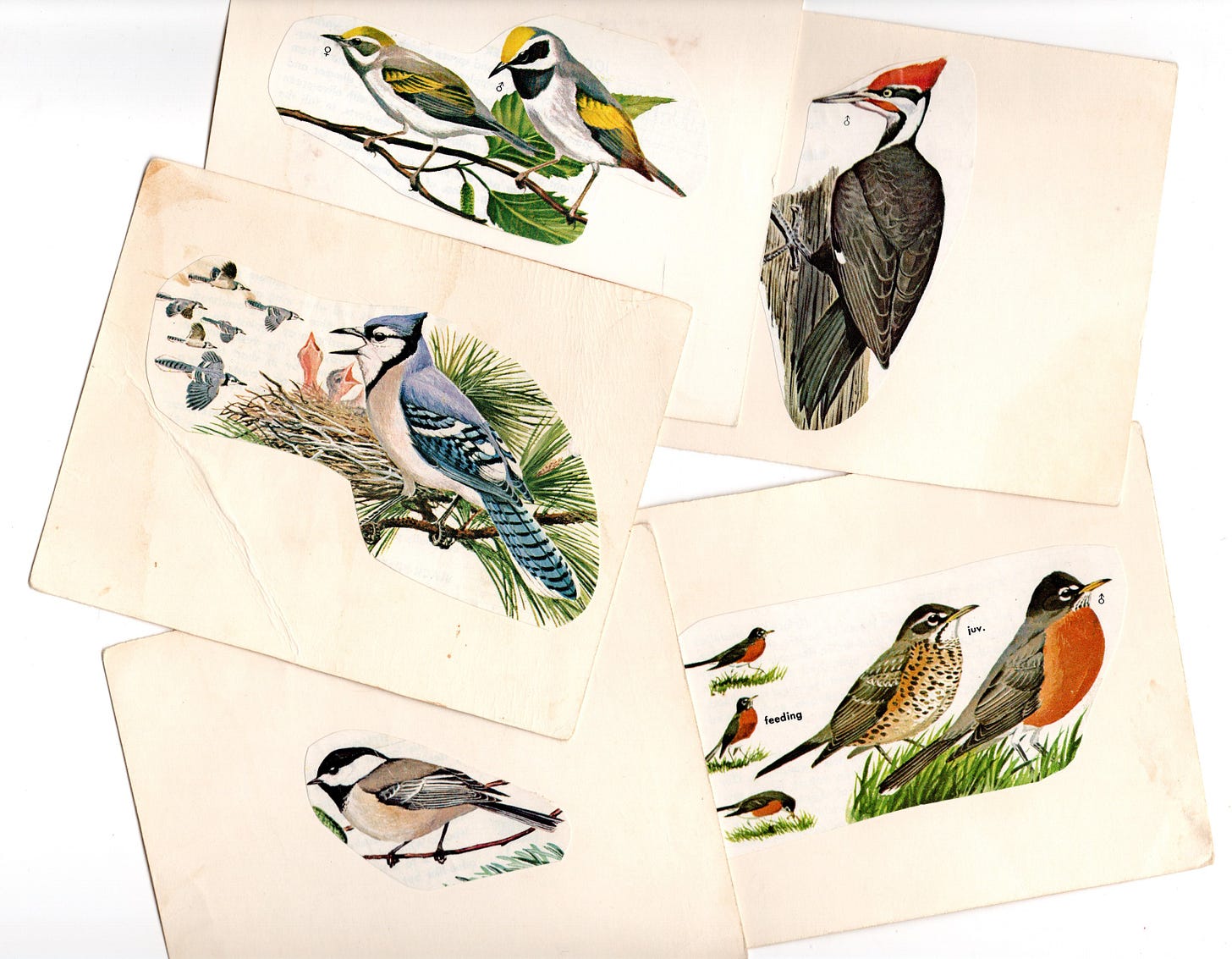
My first guide was Peterson in 1991 as required with the Birder's Handbook in Dr. Daniel Klem, Jr.'s adult ornithology class, "Biology of Birds" at Muhlenberg College in Allentown, Pennsylvania, my birding and amateur ornithology setting off point. I went everywhere with it in my back and winter coat pocket in the Lehigh Valley, marking it up as I went with additional field notes and drawings. I was so incensed at Fate when I had to discard my coffee-stained, muddied copy for a new one in 2010, transferring what I could minus the unnecessary, I thought, life list AOU numbers to my journal. (I'm not a good bird illustrator. ) My first Golden Guide I gave to my brother and his wife since I had the Peterson to teach their kids. They still have it and, I made sure, a Birder's Handbook. They're all I have now, the kids are grown, and most of them are still in Wisconsin. At their wedding in the North Woods, I went out with the Peterson on an old logging dirt road and found my first and only Gray Jays, Whiskey Jacks, Picnic, and Camp Robbers, riders at the tip of the bows of Thoreau's canoes, now back to be being named their prior name, Canada Jay. They were bathing in the dust of the side of the dirt road in a clump of 20 of them, in a tight 2x2' ball. How these large, 11 1/2 " bundles of mischievous joys, with mischievous, hypnotic smiles managed to compact themselves together I'm not sure. But there they were, out of winter range now there in that southern portion of the Wisconsin North Woods (near the woods' southern border). They are known to be a little social, I believe, correct me if I'm wrong, but I'm not sure that social. Maybe it was the presence of an impression in the road. I was lucky to stumble upon them. I like photos, especially noted with overset arrows, plain, then shopped for light, but prefer plates. They are as the bird is, and easier to use for a correct ID diagnosis.
When I got done reading your blog, I had to run and look up the date of our field guide (1966)...a year after we were married...not the year we started "noticing" birds as we were dairy farmers in Bellevue MI at that time! We recorded 14 birds we identified while living in St. Paul. Then in Thief River Falls Tarry saw a black-billed cuckoo!...I don't remember him finding that one but won't forget discovering yellow-headed blackbirds galore in a neighbor's field that had become a pond with cat-tails! Tarry's most recent sighting was a Bohemian Waxwing in February of this year!